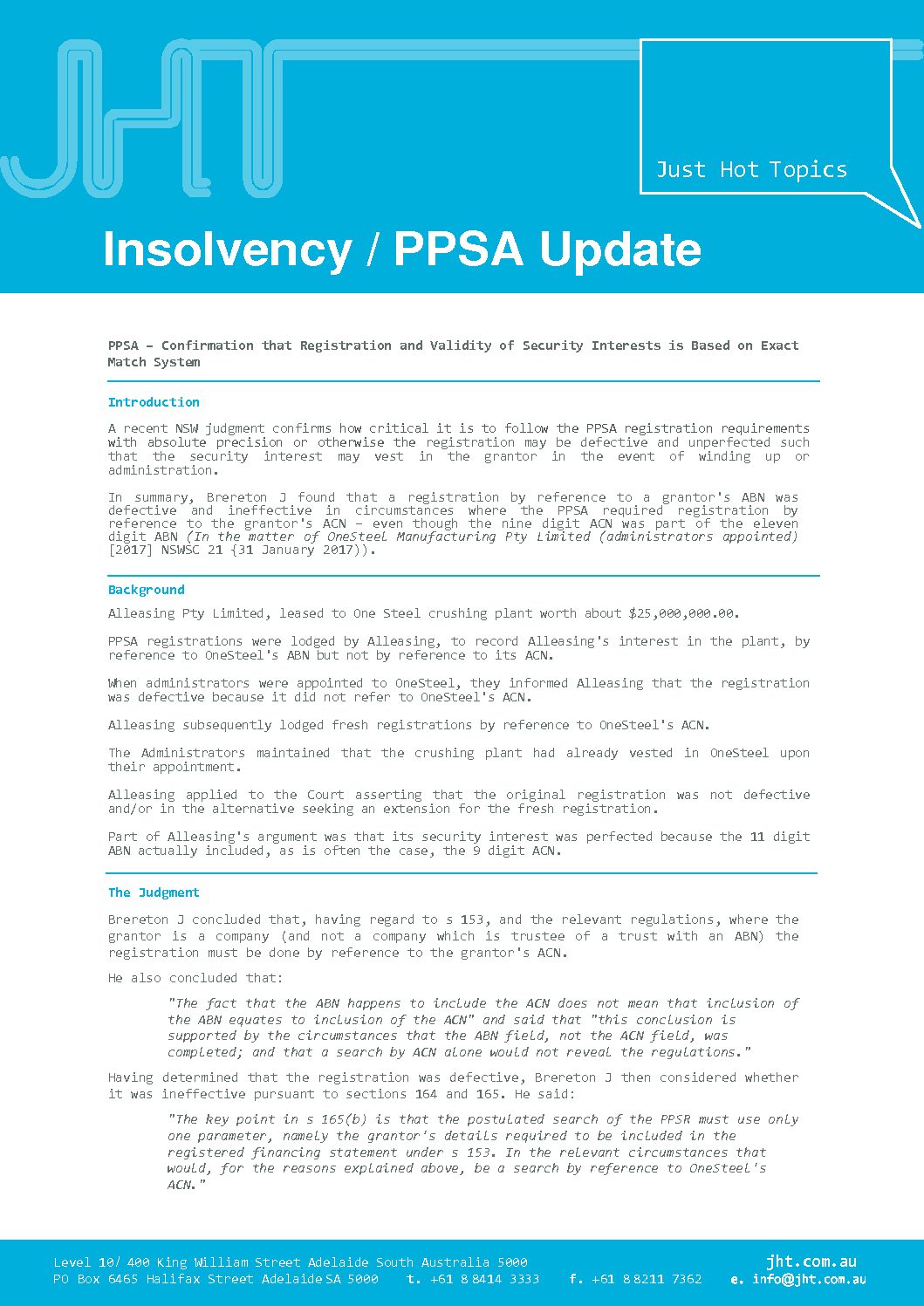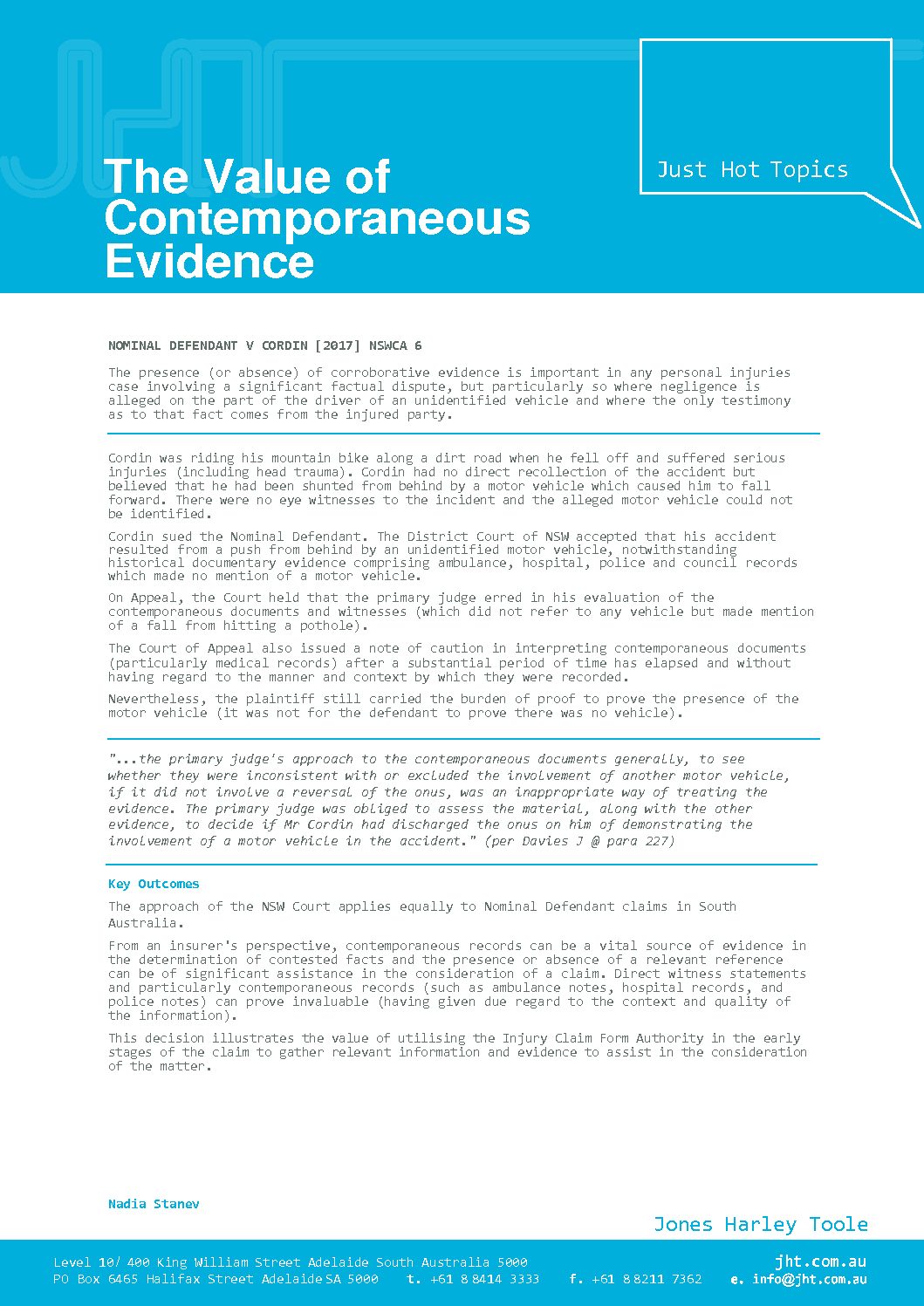THE VALUE OF CONTEMPORANEOUS EVIDENCE
CONGRATULATIONS TO HER HONOUR MAGISTRATE JANE SCHAMMER
5 December 2016
INSOLVENCY PPSA UPDATE
20 February 201714th February 2017
NOMINAL DEFENDANT V CORDIN [2017] NSWCA 6
The presence (or absence) of corroborative evidence is important in any personal injuries case involving a significant factual dispute, but particularly so where negligence is alleged on the part of the driver of an unidentified vehicle and where the only testimony as to that fact comes from the injured party.
Cordin was riding his mountain bike along a dirt road when he fell off and suffered serious injuries (including head trauma). Cordin had no direct recollection of the accident but believed that he had been shunted from behind by a motor vehicle which caused him to fall forward. There were no eye witnesses to the incident and the alleged motor vehicle could not be identified.
Cordin sued the Nominal Defendant. The District Court of NSW accepted that his accident resulted from a push from behind by an unidentified motor vehicle, notwithstanding historical documentary evidence comprising ambulance, hospital, police and council records which made no mention of a motor vehicle.
On Appeal, the Court held that the primary judge erred in his evaluation of the contemporaneous documents and witnesses (which did not refer to any vehicle but made mention of a fall from hitting a pothole).
The Court of Appeal also issued a note of caution in interpreting contemporaneous documents (particularly medical records) after a substantial period of time has elapsed and without having regard to the manner and context by which they were recorded.
Nevertheless, the plaintiff still carried the burden of proof to prove the presence of the motor vehicle (it was not for the defendant to prove there was no vehicle).
"...the primary judge's approach to the contemporaneous documents generally, to see whether they were inconsistent with or excluded the involvement of another motor vehicle, if it did not involve a reversal of the onus, was an inappropriate way of treating the evidence. The primary judge was obliged to assess the material, along with the other evidence, to decide if Mr Cordin had discharged the onus on him of demonstrating the involvement of a motor vehicle in the accident." (per Davies J @ para 227)
Key Outcomes
The approach of the NSW Court applies equally to Nominal Defendant claims in South Australia.
From an insurer's perspective, contemporaneous records can be a vital source of evidence in the determination of contested facts and the presence or absence of a relevant reference can be of significant assistance in the consideration of a claim. Direct witness statements and particularly contemporaneous records (such as ambulance notes, hospital records, and police notes) can prove invaluable (having given due regard to the context and quality of the information).
This decision illustrates the value of utilising the Injury Claim Form Authority in the early stages of the claim to gather relevant information and evidence to assist in the consideration of the matter.
Nadia Stanev PRINCIPAL
Click on the link below to view in PDF format





